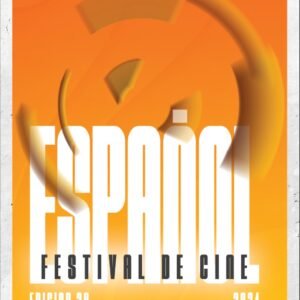Una de las muchas actividades que desarrolla la Fundación Casa Santa Ana, en Panamá, es un programa de residencia artística de cuatro semanas de duración, abierto tanto a artistas locales como internacionales. Durante este tiempo, los artistas viven y trabajan en un apartamento-estudio privado, ubicado dentro de las instalaciones de la propia fundación, lo que les permite enfocarse plenamente en su práctica artística, al mismo tiempo que participan en actividades con la comunidad local, caracterizada por ser de escasos recursos
La más reciente de estas residencias le tocó a Krystle Lemonias, una artista jamaiquina, cuya obra invita al espectador a reflexionar sobre la profunda carga histórica de su identidad afrodescendiente, al hacer uso de una técnica tan arraigada como la xilografía, en la que recurre a la talla a mano de la imagen deseada sobre una base de madera, para luego impregnarla con tinta y estamparla sobre el soporte final.
En las obras de Krystle Lemonias, el uso de la madera, como vehículo transmisor de sus historias, adquiere un significado especial al reemplazar el papel como soporte y custodio de las marcas de un pasado difícil de borrar. A través de esta técnica, la artista ha logrado conectar de manera acertada su presente con la experiencia de sus antepasados, quienes llegaron a Panamá desde las Antillas a principios del siglo pasado, al igual que muchos otros migrantes provenientes de diversas latitudes para trabajar en la construcción del canal.
Uno de los rasgos que más distinguen el trabajo de esta joven creadora, es el uso recurrente de recortes de telas que, en su narrativa, representan más que simples materiales: para convertirse en símbolos de supervivencia y creatividad, para de esta manera mantener viva la experiencia de sus antepasados, quienes gracias a su pobreza no tenían la posibilidad de adquirir muchas cosas, y las pocas que tenían las recibían de terceros, en la forma de ropa usada, frecuentemente vieja y desgastada. El recuerdo de esas prendas, son transformadas por Lemonias en fragmentos de una nueva narrativa, que nos habla de una identidad que se construye a partir de lo que se recibe y se resignifica.

El uso de estos retazos de tela pudiera evocar el «quilt» estadounidense, pero en las manos de esta artista, adquieren una dirección distinta, al transformar cada pieza en un imaginario visual que no solo recupera el pasado, sino que también lo recontextualiza. Cada una de sus piezas, ensamblada con una intención clara y especifica, nos recuerda que la identidad afrodescendiente está hecha de fragmentos que, aunque vienen de un pasado de opresión, son convertidos por Krystle Lemonias en un tejido que afirma su existencia y resistencia. Por lo tanto, con su obra, no solo celebra la historia de un pueblo, sino también su capacidad de encontrar belleza y significado en los restos del dolor.
Con su obra, Lemonias nos recuerda que la identidad es un proceso continuo de reconstrucción, además de ser una combinación de historia, memoria y resistencia. A través del uso de la estampa y los recortes de tela, la artista no solo logra rescatar los ecos de sus antepasados, sino que los transforma en una afirmación de vida y fortaleza.
Lo que un día fue símbolo de carencia, se convierte ahora en un estandarte de creatividad y pertenencia. En este sentido, su obra no solo dialoga con el pasado, sino que también proyecta un futuro donde la identidad afrodescendiente es reivindicada, resignificada y celebrada como un acto de profunda dignidad.

Krystle Lemonias
Trails of History and Resistance:
In the Work of Krystle Lemonias
One of the many activities carried out by Fundación Casa Santa Ana in Panama is a four-week artist residency program, open to both local and international artists. During this time, artists live and work in a private studio apartment located within the foundation’s facilities, allowing them to fully focus on their artistic practice while participating in activities with the local community, characterized for being low-income.
The most recent of these residencies was awarded to Krystle Lemonias, a Jamaican artist whose work invites the viewer to reflect on the deep historical burden of her Afro-descendant identity by utilizing a technique as rooted as woodblock printing, where she carves the desired image by hand onto a wooden block, then inks it and prints it onto the final medium.
In her works, the use of wood as a vehicle for conveying her stories takes on a special significance by replacing paper as the traditional medium and custodian of marks from a past that is difficult to erase. Through this technique, the artist has successfully connected her present with the experiences of her ancestors, who arrived to Panama from the Caribbean in the early 20th century, along with many other migrants from various regions to work on the construction of the canal.
One of the most distinguishing traits of this young creator’s work is the recurrent use of fabric scraps that, in her narrative, represent more than just simple materials: and become symbols of survival and creativity, keeping alive the experiences of her ancestors, who, due to their poverty, had limited means to acquire many things, and the few things they had were often received from others in the form of second-hand clothing, frequently old and worn. The memory of these garments is transformed by Lemonias into fragments of a new narrative that speaks of an identity constructed from what is received and redefined.
The use of these fabric scraps may evoke the American quilt, but in the hands of this artist, they take on a different direction, transforming each piece into a visual imaginary that not only rescues the past but also recontextualizes it. Her works, assembled with a clear and specific intention, remind us that Afro-descendant identity is made of fragments that, although stemming from a past of oppression, are transformed by Krystle Lemonias into a fabric that affirms its existence and resistance. Therefore, with her work, she not only celebrates the history of her ancestors but also their ability to find beauty and meaning in the remnants of pain.

Through her work, Lemonias reminds us that identity is a continuous process of reconstruction, as well as a combination of history, memory, and resistance. By using print on fabric scraps, the artist not only manages to rescue the echoes of her ancestors but she transforms them into a declaration of life and strength.
What was once a symbol of absence now becomes a banner of creativity and belonging. In this sense, her work not only dialogues with the past but also projects a future where Afro-descendant identity is reclaimed, redefined, and celebrated as an act of profound dignity.

Cesar Sasson
Ciudad de Panamá – Panamá
Octubre de 2024







